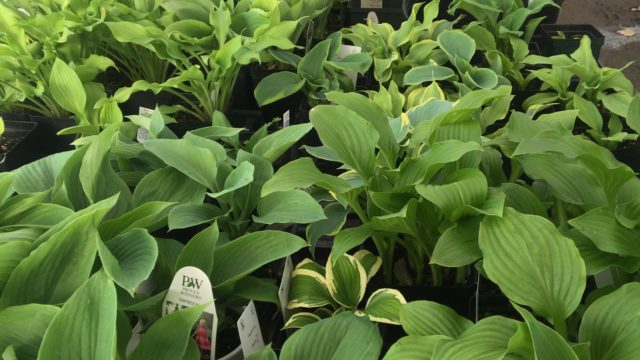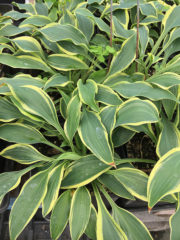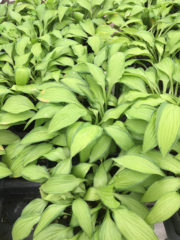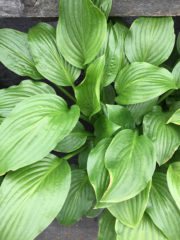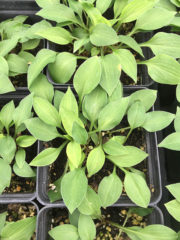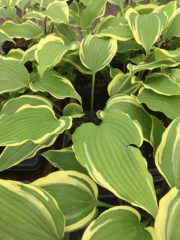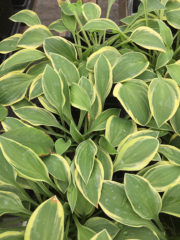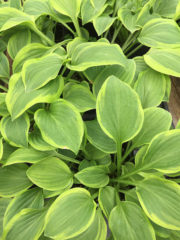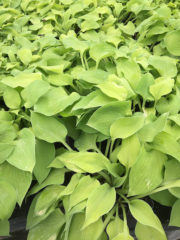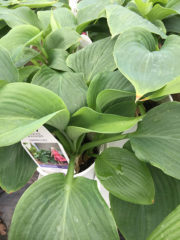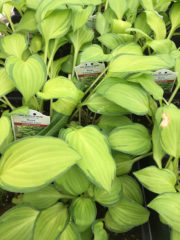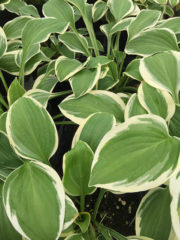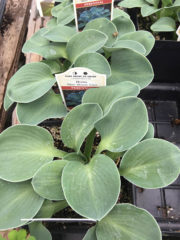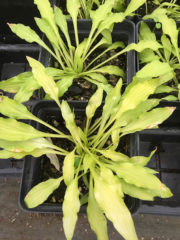Brighten up a shady spot by adding some beautiful foliage to your landscape. These carefree hardy perennials grow in a dizzying array of colors, shapes and sizes. They never need dividing, and once established will shade the ground, crowding out most weeds. Hostas are tolerant of most soils, and many cultivars even do well with some morning or midday sun.
Hosta leaves grow in a broad range of solid colors, from dark blues to deep greens, chartreuse to gold. Blue hostas often have a powdery coating on the leaves, and some green cultivars have very shiny foliage. Variegated color combinations include white, cream, or yellow on the leaf edges or centers, and are sometimes streaked or splotched across the whole leaf. Gold varieties require some direct sun to realize their best color – in shade they can become more chartreuse. Blue varieties develop best color in shade. Leaf shapes include heart-shaped, narrow, strappy, and even round, and textures range from smooth to thick, matte to seersuckered. The largest hostas can grow up to 5 feet high, with the smallest under 8 inches.
Hostas are among the most adaptable perennial and do well from USDA Hardiness Zone 3 (-40°F minimum) southward as far as zone 9 (20°F minimum). They’ll let you know if they are getting too much sun or not enough water when leaf edges become tattered and brown.
You can get new plantings off to a good start by watering during dry spells, especially during the first growing season. Maintaining a 3-4 inch thick mulch of compost or leaves will insure plenty of nutrients are available, keep moisture around the roots, and give good winter protection. Hostas growing in the shade of mature trees may need extra water and soil improvements such as compost and topsoil to help them compete with tree roots.
A hosta’s only pest is the slug. Controls include handpicking, traps, and deterrents like a layer of diatomaceous earth or crushed eggshells spread underneath the plants. Unlike many perennials, hostas do not need regular dividing to keep them growing strong. Established hosta plantings have been in place for 30 years and longer with no need for dividing!
Hostas are easy to plant and care for, and they make excellent groundcover, mass plantings, edgers, and companions to contrasting shade perennials like ferns, Japanese forest grass, coral bells, as well as woodies like Japanese maples, sweetspire, hydrangeas, clethra and boxwood.
Add some hostas to your landscape for a quick garden pick me up! We have a huge variety available for only $9 each! Click here for full descriptions.
